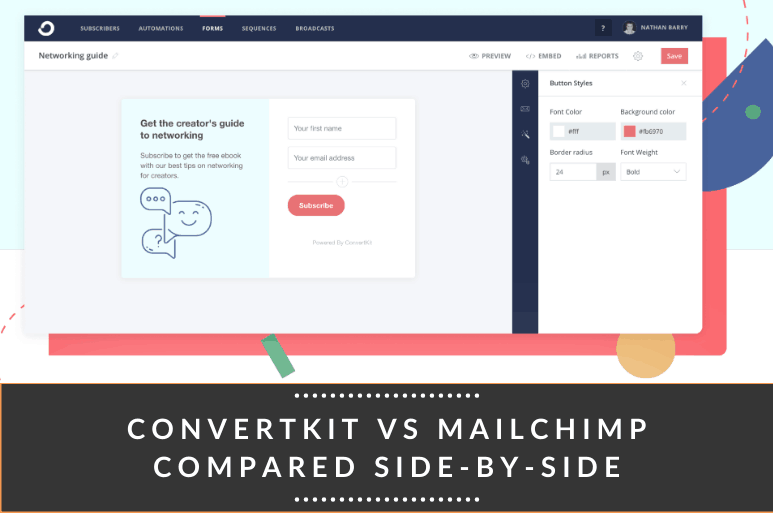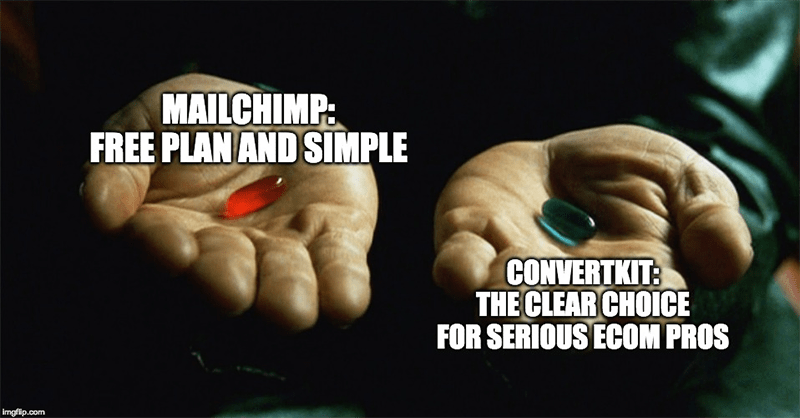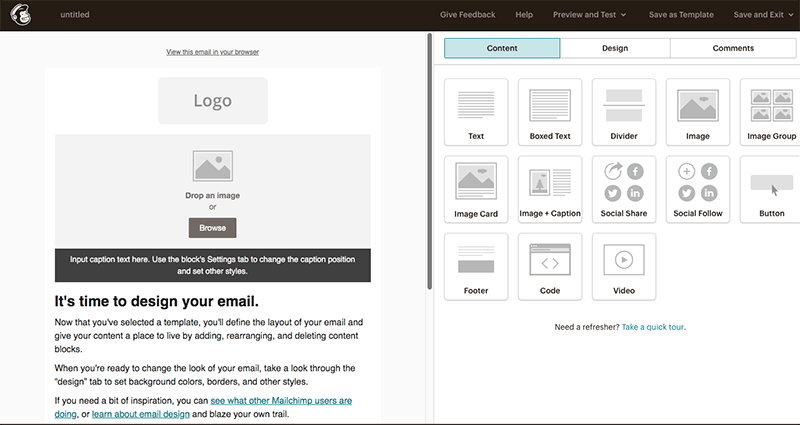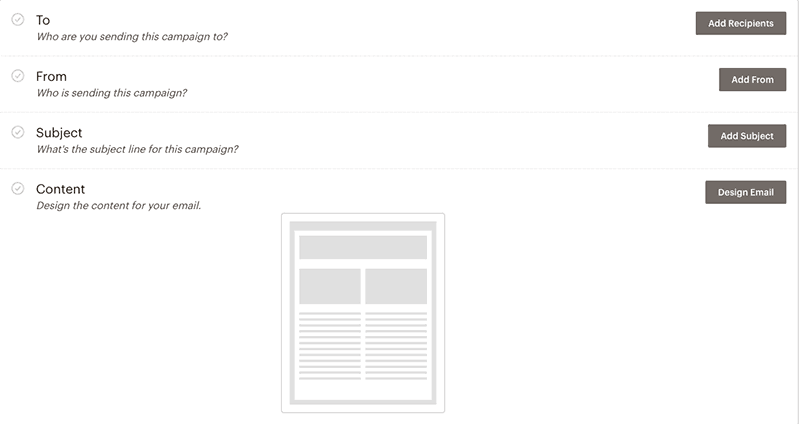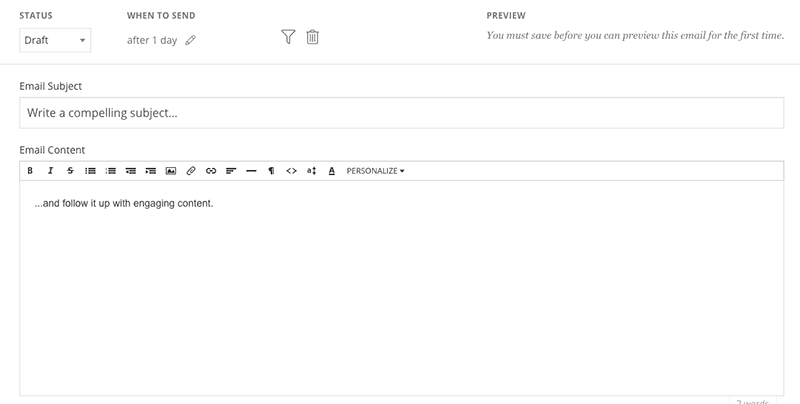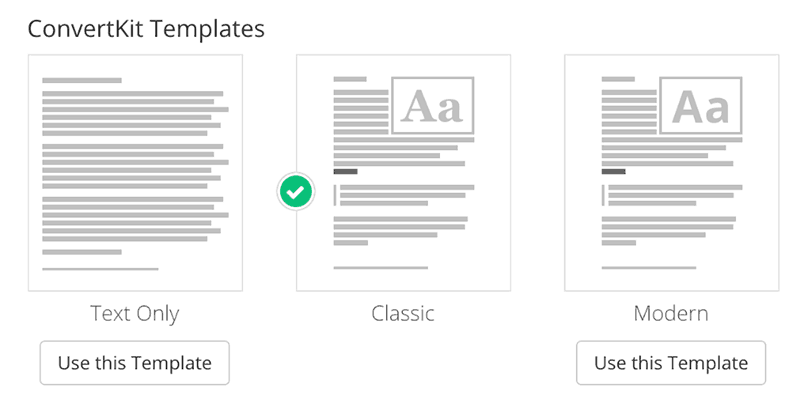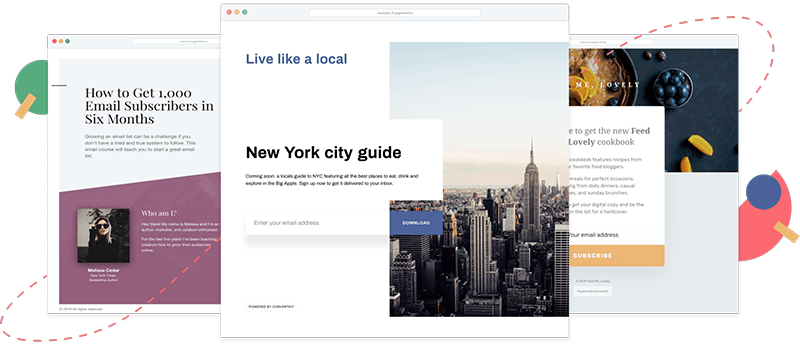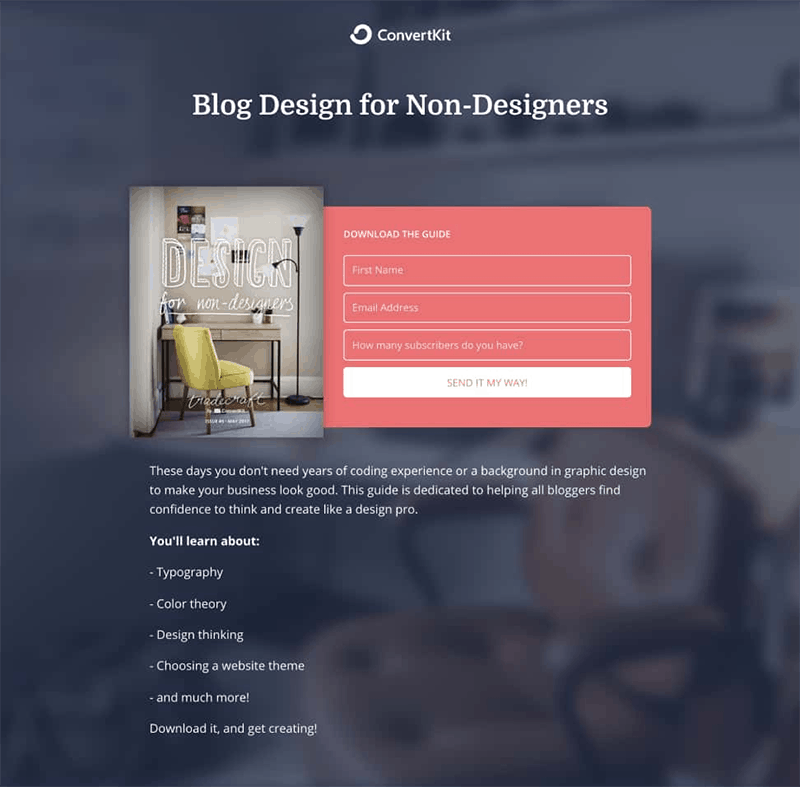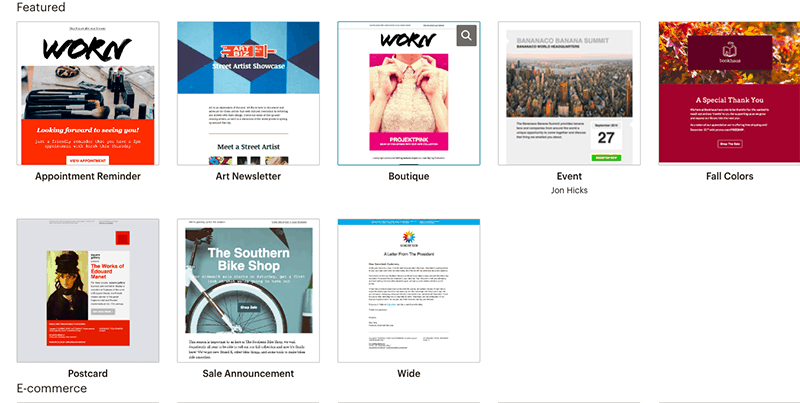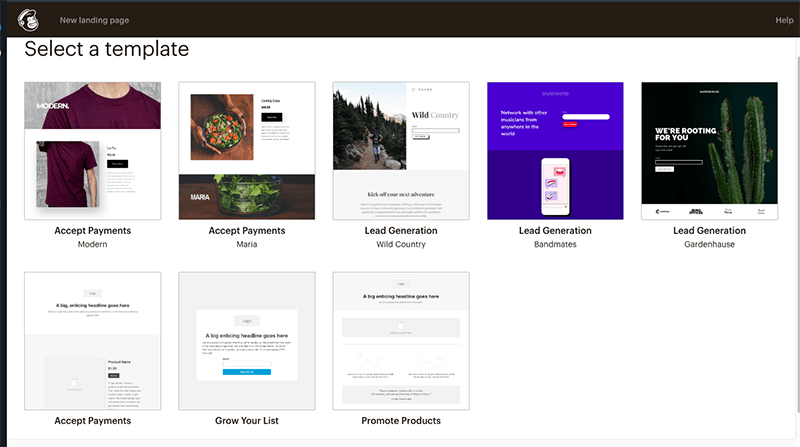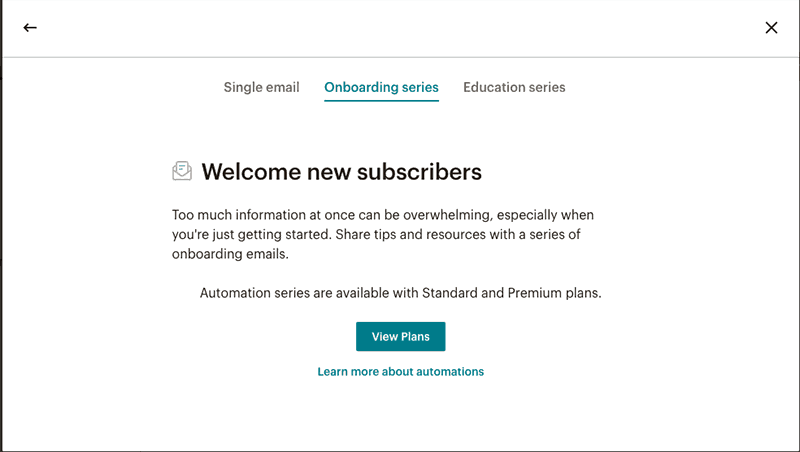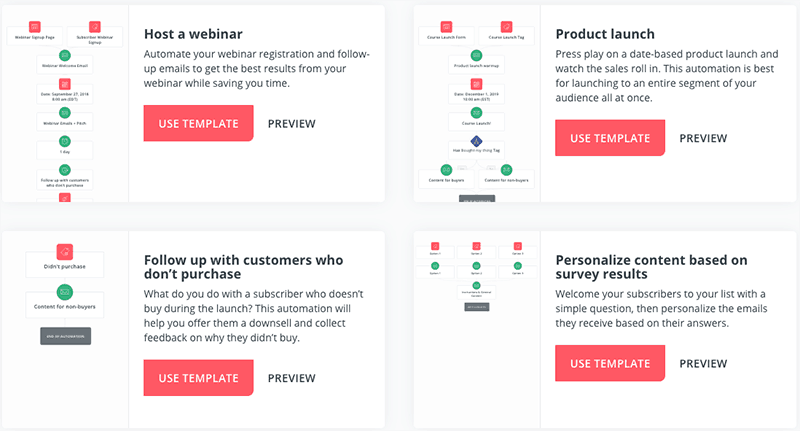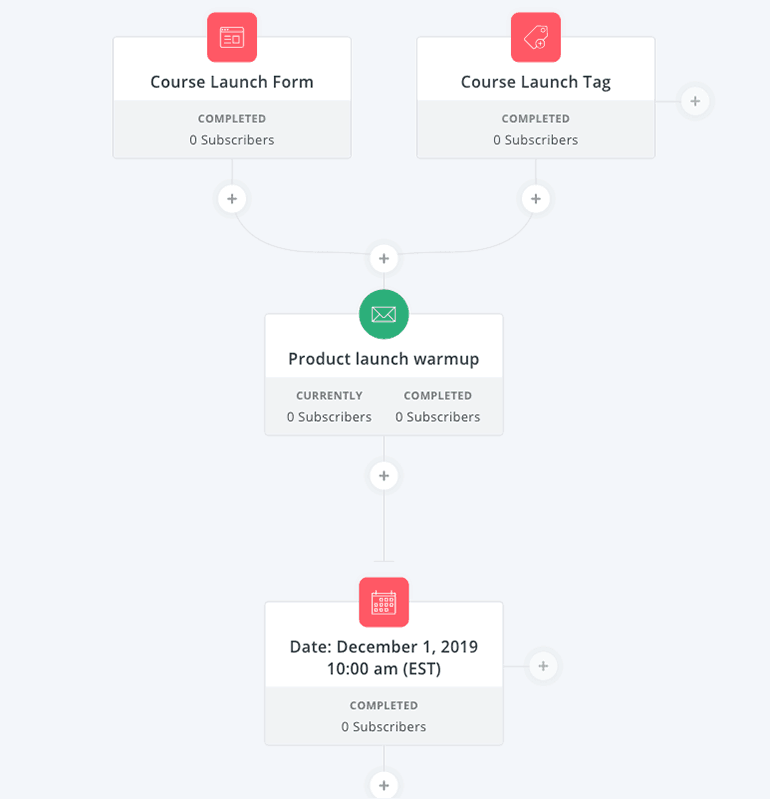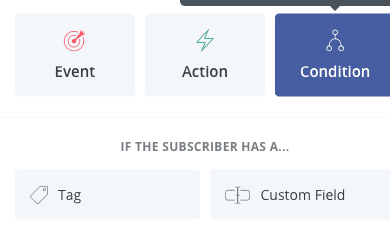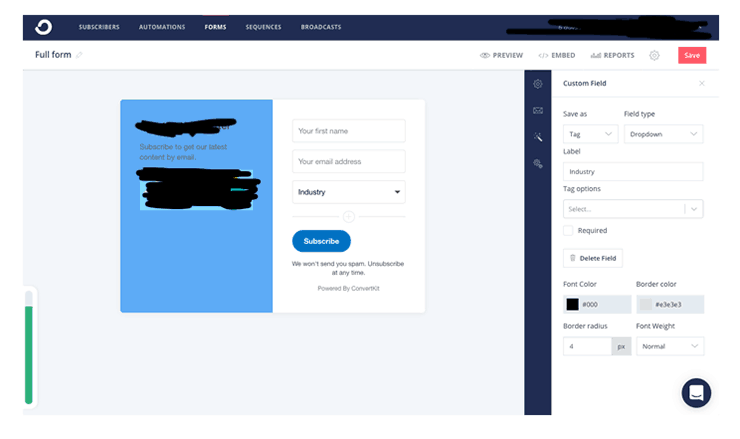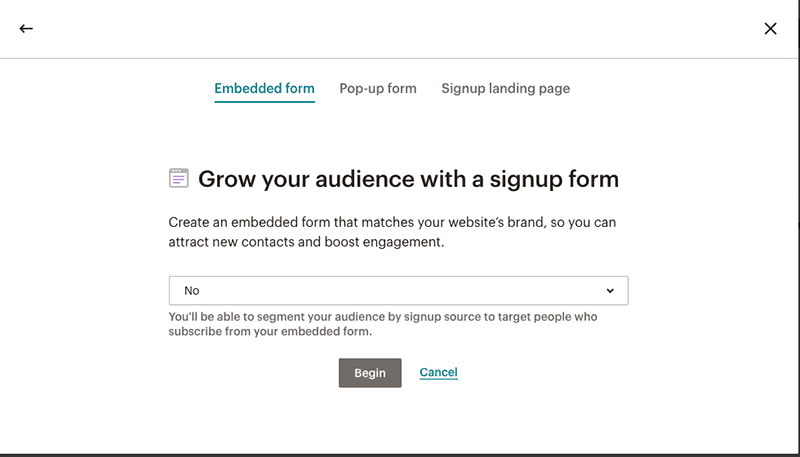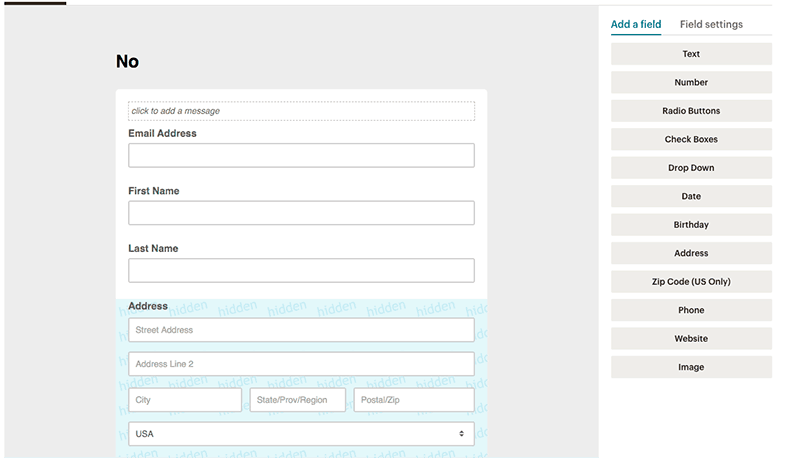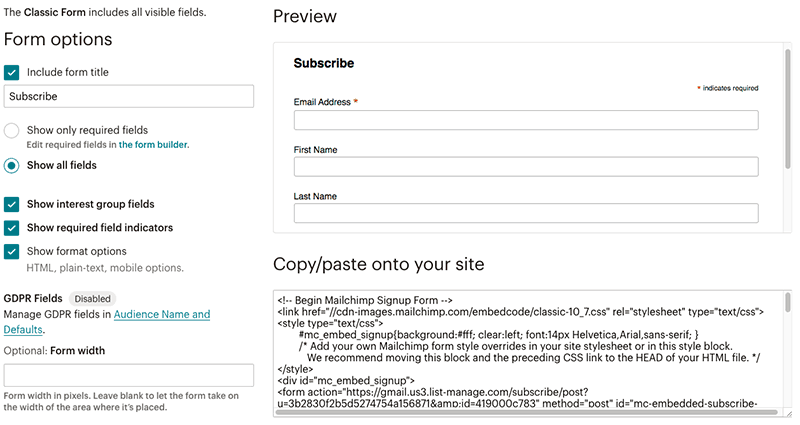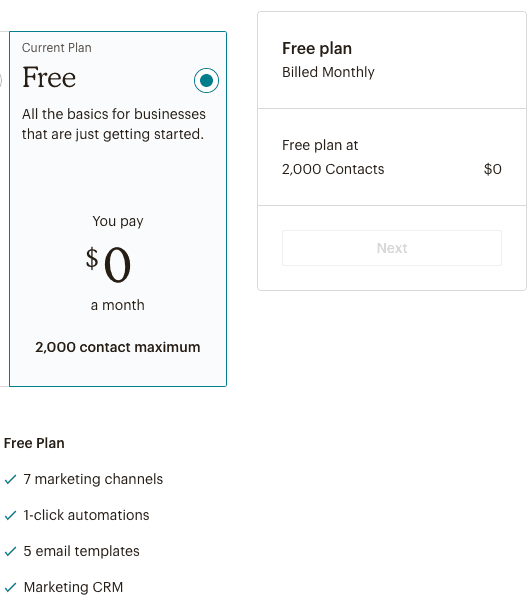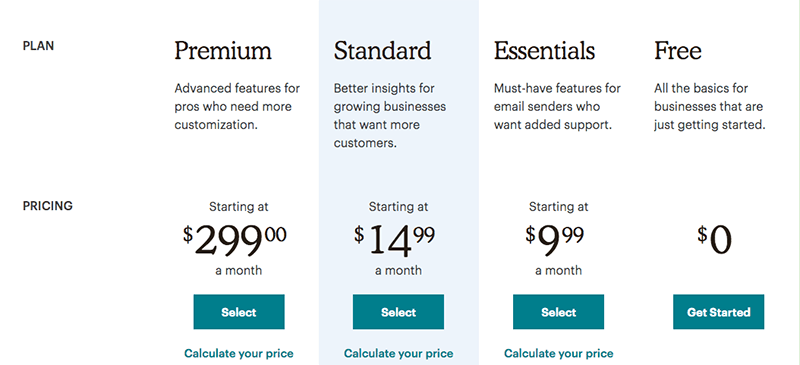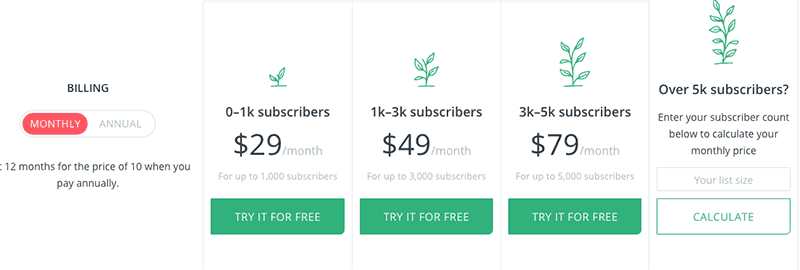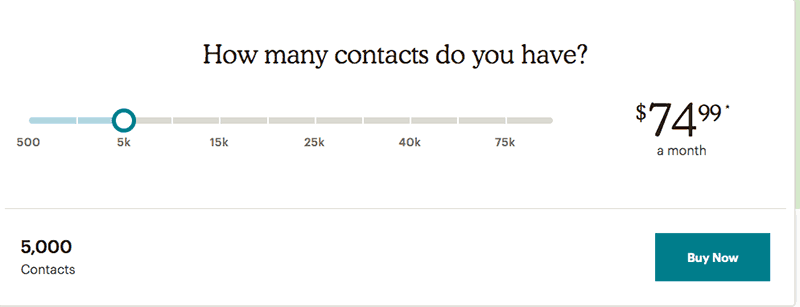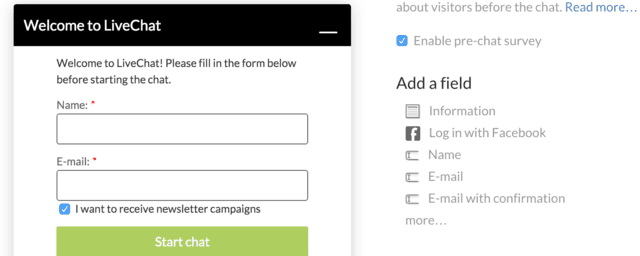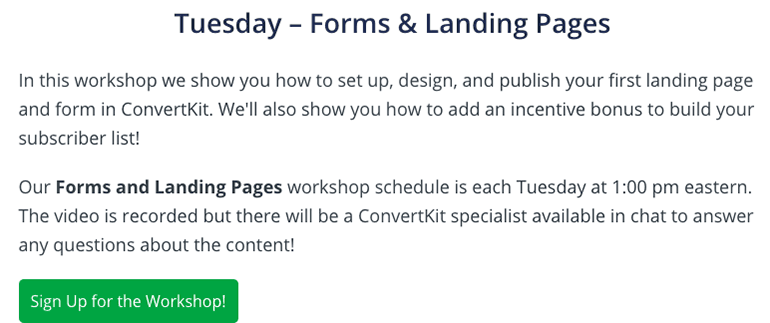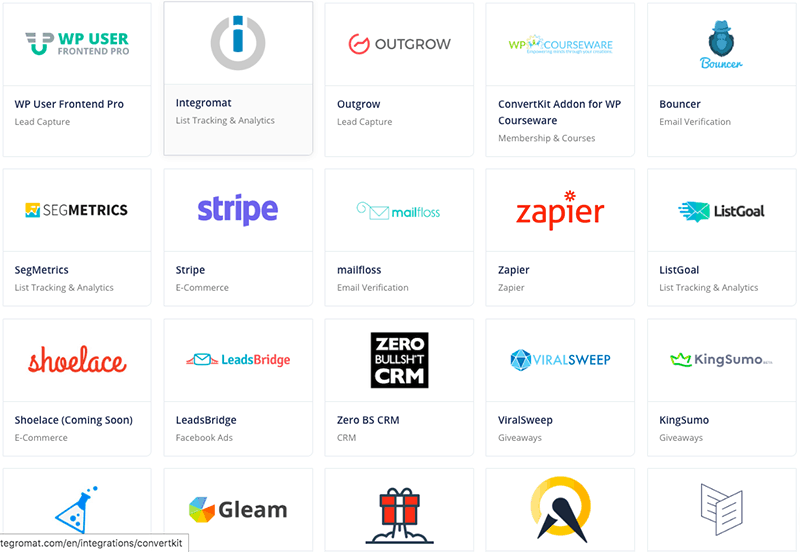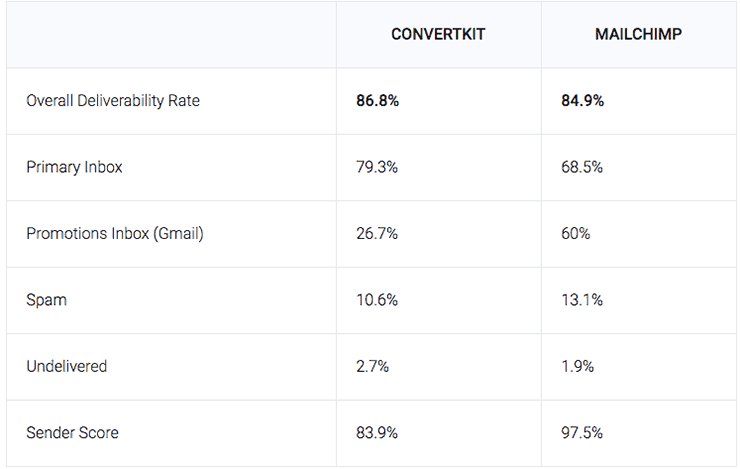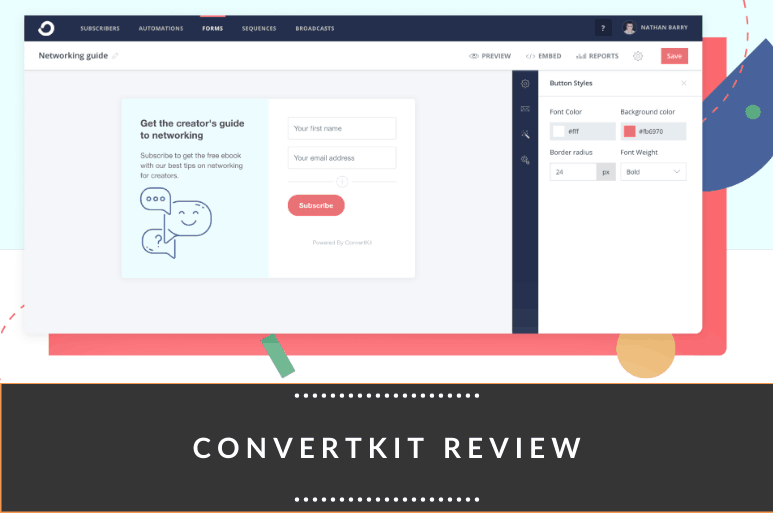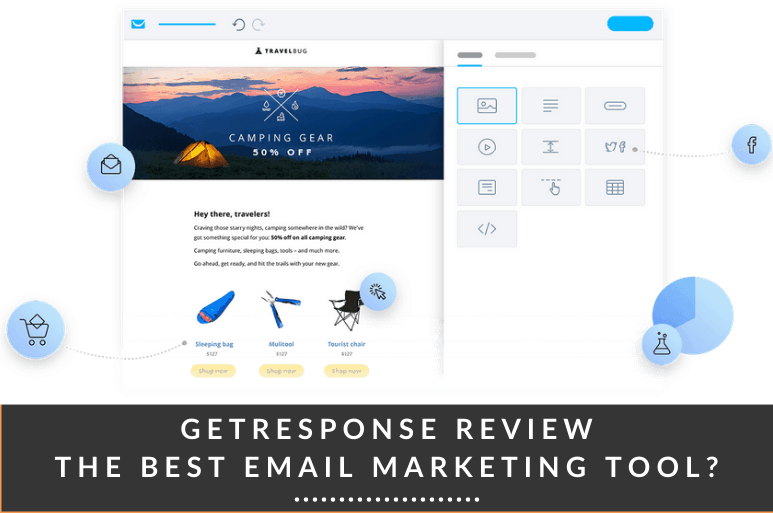Good evening, people from around the world and families watching from home. And welcome to the most anticipated bout of the year:
Our ConvertKit vs Mailchimp Review
In the red corner, the challenger, every blogger’s dream. MailChimp and its FREE plan!
And in the blue corner, the reigning heavyweight champion of email marketing – ConvertKit.
Let’s get ready to compare email building, email list management, social media integrations, marketing automation, landing page building, email templates, pricing, and forms!!!!
By the end, you’ll know exactly why there’s only 1 tool I’d recommend if you really want to grow your business, and how the other tool made it nearly impossible to scale.
ConvertKit vs MailChimp? Why Serious eCom Pros Use One And Not the Other…
All bloggers remember the rush of starting their first email marketing campaign.
That first email address signup…
Designing your welcome emails…
Pressing send…
Dreaming of the perfect sales funnel that generates millions of dollars an hour while you sleep (joking)…
I was no different.
So I signed up for everyone’s favorite FREE email marketing service: MailChimp.
Why not? It’s free to send emails to up to 2,000 people, and when your email address list is just your mom, dad, and grandma, more than 2,000 subscribers is way off in the future.
Things were going great…
Flash forward a year later, and my email list was thousands strong (#crushing).
… and that’s when the problems started.
As you’re about to see, MailChimp has some pretty awesome features for bloggers and eCom pros. But if you’re serious about growing your business, you’ll have to migrate elsewhere.
You’ll understand things better with a little more information.
Features Comparison
UX and Email Builder
I want to start with the most important basic feature of email marketing for bloggers: The emails themselves.
People won’t buy from you if you send emails that look like a summons for jury duty.
This is where MailChimp lands its first blow to the gut.
MailChimp is the perfect blend of intuitive and powerful. No other tool gives you this level of design and flexibility for emails in such a simple package.
It only takes one click to add:
- Text
- Images
- Share buttons
- Video
- Images with captions
- Your logo
- Footers
And the template has blocks ready to go. Just drag the element you want from the right side and plop it down wherever you want in the email. All you have to do now is send.
That’s why so many bloggers choose it for making their first emails.
MailChimp’s interface is clean and simple:
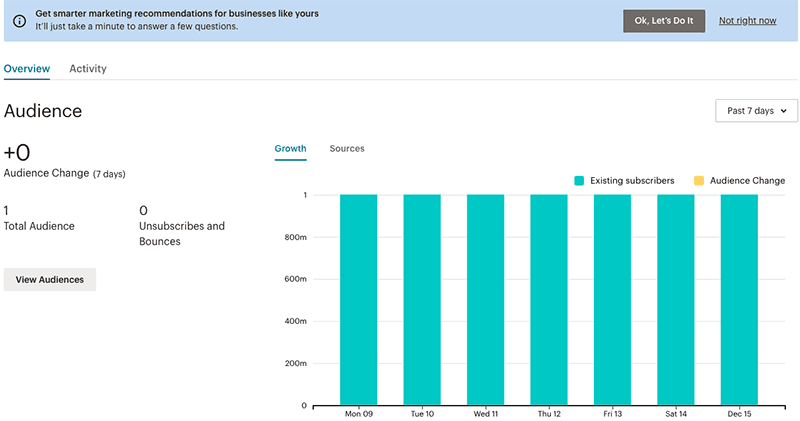
And the tool intuitively walks you through each step of creating and sending an email:
Choose your audience, say who it’s from, create a subject line, design your email, then send.
Can’t beat that. MailChimp easily passes the grandma test.
ConvertKit UX and Email Builder
ConvertKit’s email designer is actually even simpler than MailChimp’s, but there’s a HUGE difference:
ConvertKit’s email designer is easy to use and basic. MailChimp’s is easy to use and POWERFUL.
Check out this email builder:
There is no drag-and-drop editor, so the only changes you can make are to text – e.g. font, color, italics, bold, etc.
Round 1 Winner: MailChimp
MailChimp and ConvertKit both have simple email design tools and UX. But MailChimp’s is on another level.
Designed Templates
Both tools offer templates for creating professional looking emails and landing pages, but MailChimp manages to land a nice rib shot here again.
ConvertKit Email Templates
They only offer 3 templates for emails: Text, classic, and modern.
This is for a VERY IMPORTANT reason. I’ll explain all of that below.
Another advantage here: mental energy.
You know how Mark Zuckerberg wears the same thing every day so he doesn’t waste energy deciding what to wear? Yup, ConvertKit does that too.
As for landing page templates, they offer 18 distinct templates.
This makes it easy for people to create professional landing pages with 0 effort. I love how easy it is to create a lead magnet landing page:
MailChimp Email Templates
MailChimp is the more artistically inclined of the two with around 100 templates for emails.
Get this, they give you an intuitive builder and a template based on function, so you literally do as little thinking as possible when creating your email.
Need a newsletter? They’ve got a proven template. You just plug in your text and images. Need to announce a sale? They’ve got a ready-made email made for you already. It’s pretty easy to see why bloggers love it so much.
Landing page templates aren’t as plentiful, but they’re just as good as ConvertKit’s.
Let’s call the landing page designs a draw for simplicity’s sake.
Overall though, this is a clear win for MailChimp. There’s just one big caveat.
Round 2 Winner: MailChimp
They both make it easy to design and send emails. But hard to argue with 100 beautiful email designs categorized by function. MailChimp’s shot to the ribs lands hard here.
IMPORTANT NOTE:
ConvertKit offers only 3 email template types for one important reason: Research has shown that people prefer when you send basic text emails.
Why? To sum it up, they’re more casual, they improve deliverability, and they are more engaging (People hate distractions.
So MailChimp offers far more design options, but that actually might not be an advantage. This is all according to ConvertKit, though. So take it with a grain of salt.
Lists and Segmentation
Here’s where the tide starts to turn.
Let me explain something about lists and subscribers that I learned the hard way.
As bloggers grow, it gets harder and harder to manage an email address lists.
Especially keeping track of who has purchased what, taken which actions, received which email, etc.
And guess what happens when you screw up and Johnny McEmailSubsriber receives 3 duplicate emails offering him the same product over and over?
He unsubscribes.
I lost countless subscribers from my list due to my mistakes. This isn’t MailChimp’s fault, but it’s a direct result of their list management system.
The key difference is MailChimp is a list-centric system whereas ConvertKit is a SUBSCRIBERS centric system. The latter has a few key advantages for all bloggers.
I’ll explain…
The difference between MailChimp’s and ConvertKit’s list system…
MailChimp is a list-based marketing tool. That means the main method of segmentation is creating different lists.
ConvertKit, on the other hand, works from one master list.
Instead of creating new audiences through different lists, you add tags or segments to subscribers within that master list. This totally eliminates duplicate contacts.
So basically the difference is with ConvertKit you only manage one list and segment subscribers with tags.
With MailChimp, you create completely new lists for each audience (And pay for duplicates!).
Here’s an example…
Say you have 3 types of Memorabilia: Game of Thrones, Star Wars, and Lord of the Rings (*nerd alert*).
With MailChimp, you’d create 3 separate lists, one for each audience.
With ConvertKit, you’d have one single list with tags – GOT, SW, LOTR – depending on which one the subscriber thinks is best (It’s clearly LOTR, don’t @ me).
Round 3 Winner: ConvertKit
There’s a lot of debate about which tool is best for bloggers, but ConvertKit is clearly better.
You can’t fully understand this until you grow to thousands of subscribers, but their single-list system makes it extremely easy to stay organized and manage a list of 5,000, 10,000, or even 100,000 subs.
You can keep track of what they’ve purchased, the lead magnets they’ve downloaded, the blog posts they read – pretty much everything about them down to eye color and high school crush (don’t remind me).
So while MailChimp does have a tag system, the separate lists makes it way harder to set up advanced automations.
Speaking of automations….
Marketing Automations
Did You Know?: Marketing automation improves conversion rates by up to 50%. If you aren’t using it, you’re throwing money away.
Nobody becomes a champ by accident.
ConvertKit’s marketing automations are a source of pride for the company.
And, in my opinion, the reason that you should 100% choose ConvertKit if you’re serious about growing your business.
But first, let’s cover MailChimp.
MailChimp Marketing Automation Features
Creating an automated email sequence is pretty straightforward… IF you can even find the damn tool. It’s hidden under Campaigns -> Create Campaign -> Email -> Automated.
From there, you can choose to create an educational, welcome, or onboarding series.
From here, everything is pretty much the same as before. Just know that email sequences ARE NOT AVAILABLE IN THE FREE PLAN!
You’ll have to pay at least $10 per month to get any of these features. Maybe even as high as $14.99 a month. It all depends. I cover all of that in pricing below.
ConvertKit Marketing Automation Features
ConvertKit’s automations are simple, intuitive, and powerful. That is going to be key to automating your business down the line.
MailChimp offers some basic sequences, but ConvertKit takes it to a whole new level. They’ve got done-for-you templates of the most popular email sequences. Everything from product launches to wrangling in evil cart abandoners and enticing them to buy again.
And once you choose a template, building a sequence is intuitive with the visual sequence builder.
The tool literally tells you exactly what to do to automate your business and earn money while you sleep (or start working on your next business).
You can even set granular conditions like triggering the tool to send emails based on a certain event or tags.
All bloggers, even non-techy ones, can build a high-converting email sequence with this tool. And since it’s visual, you can SEE the path your customers are taking and get a real sense of your sales funnel.
Round 4 Winner: ConvertKit
Advanced automation templates and an intuitive visual builder make this a no brainer.
With MailChimp, you either need to plan advanced sequences out in a separate program or risk limiting your growth.
In the beginning, that’s fine. But once you want to scale, it’s fatal.
ConvertKit lands a hard right to the jaw. I doubt this fight is going the distance.
Bonus: All of ConvertKit’s features are included in every plan regardless of how much you pay per month.
Forms
All of this means 0 if you don’t get people to sign up.
ENTER: Forms!
I know how exciting this must be. Finally, we’re talking about REGISTRATION FORMS!
Let’s cover them quickly. They do matter.
ConvertKit Forms
In ancient times, marketers had to add forms via code. These were dark times.
Thankfully, the Renaissance is in full swing over at ConvertKit, and you can now choose from 4 form templates: Modal, Slide-in, Inline, and my favorite – the Sticky Bar!
Cool Hack: It’s really easy to add a drop down function within forms. Like this:
And you can even hide forms from return visitors!
MailChimp Forms
I actually really like MailChimp’s form builder. It lets you create a signup, embedded, or pop-up form from the main box.
From within the Form Builder tool, you can just drag and drop custom fields.
The only nitpick I have is that the embedded form builder is a bit wonky and outdated.
Not a deal breaker, I’m just picky.
Round 5 Winner: Draw
I like MailChimp’s drag-and-drop editor, and I like the cool templates that ConvertKit has.
And since forms aren’t super important to your success (ha-ha..), let’s just call this a draw.
ConcertKit vs. MailChimp: Pricing
How much does ConvertKit cost per month? Is MailChimp really free? Are these tools even worth it? Are the costs different if I pay per month or annually?
I want to cover pricing for both of these email marketing platforms in depth.
Let me just start by saying this:
This is a business INVESTMENT. Nobody is going to give you an awesome tool that fully automates your email marketing for free. If you aren’t prepared to spend money on your business every month, quit now.
OK, good. I am just tired of people begging for free tools.
Moving along…
MailChimp Pricing
You can’t beat free. Yes, MailChimp is actually FREE… up until a certain amount of subscribers. This is great for businesses just getting started.
Of course, you also don’t get any of the essential features you need to really start growing your business. But if you’re just starting out, then that’s so far down the line you might not care.
To get that, you need to upgrade to one of their paid plans. They start at $9.99, $14.99, and $299 (*GULP*) respectively.
But wait, there’s more!
Pricing always varies within each plan depending on the number of subscribers. Here’s where I start to really dislike MailChimp.
Say you want the Standard plan. $14.99 a month. Not bad!
… but that’s only for 500 subscribers.
No business can grow with that amount. So say you have 5,000 subscribers.
The price is now magically $75!
I’ll explain why this really irks me below. But first…
Is MailChimp still affordable for small businesses?
YES.
Say you just want the Essentials plan with enough features to grow a small site/business. You’ll probably have a manageable email address list of about 2,500 subscribers. Then you’d only pay about $30/mo. Definitely cheap by eCom standards.
ConvertKit Pricing
At first glance, this is definitely the more expensive tool. ConvertKit doesn’t have a FREE plan, just a free trial.
You need to pay a minimum of $29/month.
And $29/month doesn’t get you much. Most smallish businesses will fall into the $49/month range.
Trust me, I know how tough that is to stomach when you haven’t made a dime from your blog.
But here’s why ConvertKit’s pricing is SO MUCH BETTER than MailChimp’s once you are ACTUALLY doing business:
- Simple pricing = cost control: MailChimp’s pricing is impossible to nail down. ConvertKit gives you EVERYTHING all in one plan. You just pay more for more subscribers. This lets you easily plan costs now, next month, AND far into the future.
- ConvertKit is cheap until you’re making real money: Let me explain. $79/month is steep, but once you have 5,000 subscribers you should be make some good money. ConvertKit doesn’t get “expensive” until you’re actually making money.
And MailChimp isn’t actually cheap at all. In fact, their Standard plan costs almost the same for 5k subscribers.
So for $5 more per month, you get way better features… it’s a no brainer.
Round 6 Winner: ConvertKit
ConvertKit’s straightforward, all-inclusive pricing is far superior to MailChimp’s for everyone, except absolute beginners. You get all of the advanced features for just a few dollars more per month, and can easily plan for price increases.
And when you compare ConvertKit to other tools for advanced marketers such as ActiveCampaign, it’s far cheaper.
You should only use MailChimp if you’re just starting out or are on a budget and need a FREE solution.
Everyone else should go with ConvertKit.
ConvertKit vs. MailChimp: Extras
That’s all of the super important features that will directly affect your business. Here are a few somewhat important features that could sway your decision.
Support
In my experience, both MailChimp’s and ConvertKit’s support are excellent.
MailChimp has supportive and fairly responsive live chat people. Though they are a bit slow at times. My hunch is the free plan attracts a lot of newbies with a lot of newbie questions.
The Premium plan even comes with M-F phone chat!
ConvertKit also has responsive live chat (A tad more available) and helpful resources.
What puts it over the top here is their cool workshops!
Tuesday ConvertKit landing page workshop? Pencil me in!
Integrations
Both tools are integration machines. ConvertKit offers about 90 integrations with pretty much every important eCom/marketing tool out there.
The only thing that’s missing is integration with CRMs. I for the life of me can’t understand why.
And with Zapier you get even more integrations. My favorite are the social media integrations. For example, you can add new leads from Facebook easily.
MailChimp goes the extra mile here. It integrates with pretty much everything on Earth. It is the living Borg. Resistance is futile.
Their social media plugins are sweet too. You can use granular data to run high-converting Facebook campaigns.
However, there’s one glaring weakness: SHOPIFY!
This is basically a death sentence if you ask me. Without direct Shopify integration, I don’t see why any eCom store owner would use MailChimp.
Email Deliverability
Last but not least, let’s cover if these tools actually work. Actually, we should’ve covered that at the beginning! It doesn’t matter how you send emails. If they don’t get there, you don’t make money.
Good thing they both work just fine. I’ve rarely had any issues with either. However, ConvertKit is clearly superior. Check it out:
For one, they have a slightly higher deliverability score. But what really matters is that ConvertKit emails have a higher chance of reaching the primary inbox by a wide margin.
And MailChimp emails are far more likely to end up in promotions or spam.
I guess ConvertKit is right about their simple email philosophy…
Round 7 Winner: ConvertKit
Workshops, Shopify integration, and better deliverability make this a clean knockout. MailChimp stayed on its feet for 7 solid rounds. But this one is over.
Let’s go to the judges.
WINNER AND STILL CHAMPION: CONVERTKIT
ConvertKit is the clear choice for serious businesses.
Better automations, superior list tagging and segmentation, better overall deliverability, and Shopify integration make it the clear choice for businesses with big aspirations.
MailChimp is fine in the beginning when your list is small and your dreams are making $1,000/mo. But it will severely limit your growth.
Now do you see why I ran into issues when I wanted to scale?
It got really tough for me to set up marketing automations, and I struggled daily with managing lists.
Duplicate emails, paying for duplicate users, always calculating price increases – it became a nightmare. I ended up wasting countless days and tons of money migrating everything over to ConvertKit.
Don’t make the same mistake I did.
I hope this review helped. Let me know which tool you want to read about next!
